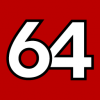-
Posts
12428 -
Joined
-
Last visited
-
Days Won
554
Content Type
Profiles
Forums
Events
Everything posted by Fiery
-

fixed: Water Pump "Fan" header not detected (Asus Maximus VIII Gene)
Fiery replied to eldata's topic in Hardware monitoring
Thank you for the feedback. Yes, it should be able to read that temperature input. Most likely that software reconfigures the motherboard sensor in a way that AIDA64 will no longer be able to read some readings from it. I don't think reinstalling (or extracting the ZIP package) of AIDA64 is necessary in such cases. A simple restarting of AIDA64 should be just as useful to remedy the situation. -

fixed: Water Pump header on Asus Maximus VIII Hero board
Fiery replied to zerone's topic in Bug reports
Thank you for the feedback. -

Gigabyte Z170 Gaming 7 - missing a lot of sensor readings
Fiery replied to -Vulture-'s topic in Bug reports
No problem Regards, Fiery -
Yes, you're right, but that issue only comes up under Windows 10 Mobile Preview. We will fix it in the next AIDA64 app update, as long as Microsoft wouldn't reject our update because of using non-standard Windows API calls BTW, what value do you have displayed for App Memory Usage Limit on the Windows page in AIDA64?
-

New LCD device support: Samsung SPF Digital Photo Frames
Fiery replied to Fiery's topic in Hardware monitoring
In AIDA64 Build 3540 we've had to transition from the old (classic) digitally signed kernel drivers from the new, SHA2 digitally signed EV (Extended Validation) kernel drivers. The new EV signing will soon be mandatory to use kernel drivers under Windows 10 and Windows Server 2016. That necessary move however rendered the old kernel driver inoperable under such Windows 7 64-bit installations that don't have all the security hotfixes applied properly. Windows 7 should pop up a message box about this issue, claiming that the AIDA64 kernel driver is not digitally signed. Which is of course not true: the kernel driver is signed, but Windows 7 cannot recognize the SHA2 digital signature. What you have to do to fix it up is apply the following KB hotfix package: KB3033929. You don't have to apply the rest of the available hotfixes to make AIDA64 work -- although we usually recommend to have all available security patches to be installed, it's just common sense -
I've sent you your product key in private message.
-
AIDA64 uses the Strike7 SDK by the book, following Mad Catz's specifications and guidelines. So in case the Strike7 software makes AIDA64 crash, or the Strike7 software stops talking to AIDA64, then I'm afraid you have to ask Mad Catz for a resolution. In case Mad Catz investigates the issue and points to a problem about our implementation of the Strike7 protocol in AIDA64, then we would be happy to fix it on our end.
-

New LCD device support: Samsung SPF Digital Photo Frames
Fiery replied to Fiery's topic in Hardware monitoring
No, we haven't changed anything recently about the Samsung SPF LCD support module. -

fixed: Asus ROG Maximus VIII Gene Z170 Motherboard temps 70c+
Fiery replied to Rubyrabbit's topic in Bug reports
Thank you for the feedback, I'm glad it works fine now In the past 6 or so weeks we've been working hard to resolve all issues about monitoring Skylake and Z170 chipset based motherboards. So these days it's highly recommended to always have the latest beta running on a Skylake system. We will soon roll out a new stable update to finish up our efforts on Skylake-related improvements. -

fixed: Water Pump "Fan" header not detected (Asus Maximus VIII Gene)
Fiery replied to eldata's topic in Hardware monitoring
Thank you for the feedback -

fixed: Water Pump header on Asus Maximus VIII Hero board
Fiery replied to zerone's topic in Bug reports
You can download the mentioned new beta version of AIDA64 Extreme from: http://www.aida64.com/downloads/latesta64xebeta -

fixed: Water Pump "Fan" header not detected (Asus Maximus VIII Gene)
Fiery replied to eldata's topic in Hardware monitoring
You can download the mentioned new beta version of AIDA64 Extreme from: http://www.aida64.com/downloads/latesta64xebeta -

fixed: Asus ROG Maximus VIII Gene Z170 Motherboard temps 70c+
Fiery replied to Rubyrabbit's topic in Bug reports
Please upgrade to the latest beta version of AIDA64 Extreme available at: http://www.aida64.com/downloads/latesta64xebeta After upgrading to this new version, make sure to restart Windows to finalize the upgrade. Let me know if it helps. Thanks, Fiery -
Try to turn off BBCode mode, or use a different web browser. The forum engine doesn't seem to work 100% with Internet Explorer.
-
AIDA64 is not linked to that DLL, and it never tries to load it. What could happen on your system is that when AIDA64 tries to detect a certain system setting or property, a background process or service gets activated, and that process/service cannot load the mentioned DLL file.
-

will aida64 support products released after its current version?
Fiery replied to newhere's topic in General Discussion
It will not detect the GPU on the Display / GPU page, and it will not display any readings on the Computer / Sensor page for the video card. -

will aida64 support products released after its current version?
Fiery replied to newhere's topic in General Discussion
Yes, but it's not because we want you to pay again, but because we cannot implement support for all future hardware. And implementing support for new technologies, newly released hardware is a constant work on our part. That's why we have to release beta updates every week (sometimes twice a week), and stable updates every 2-3 months. AIDA64 not like most software: it's not enough to update it once a year to keep it fresh and bug-free. It's not easy to keep AIDA64 up-to-date, and if you are a sort of hard-core user who keeps his hardware always up-to-date, then it's necessary for you to keep AIDA64 up-to-date as well by using the latest version. Of course it's not mandatory, so e.g. if you buy a new video card and your old AIDA64 version doesn't support it, but you can live without monitoring your new video card, then you can still keep using the old AIDA64 version. Yes, AIDA64 is a bit like an anti-virus, but only if you keep changing your hardware. If you keep your hardware for years, then you can keep your old AIDA64 for years, you don't have to always have the latest version installed. Unless of course you want to use a new feature that is not related to hardware, like the RemoteSensor and Logitech Arx modules that we've rolled out last December. An example of a case when you don't need to renew AIDA64 for years: the last computer I've assembled for myself was back in 2011. It was based on a Z68 chipset, Core i7-2600 "Sandy Bridge" CPU, and Windows 7 64-bit. I've kept the system almost intact for 4 years, and only a few days ago I've retired it an switched to a completely new PC. If I purchased AIDA64 back in 2011, just because of new technology rolling out I wouldn't have had to renew my license until today. Now that my new computer is based on the latest hardware (Z170 + Skylake) and has the latest OS (Windows 10) installed, I would have to renew my license. But between today and 2011 the old license would have worked perfectly. -

will aida64 support products released after its current version?
Fiery replied to newhere's topic in General Discussion
It depends on the type of hardware in question. Future GPUs cannot be supported, because their IDs usually do not leak before their launch. CPUs and chipsets are different beasts, usually they are supported months (in some cases 6+ months) before their market launch. Motherboards, and especially special sensor tweakings cannot be implemented before the market launch of the actual motherboard model in question. New, hot technology advancements like NVMe can sometimes be supported before an actual product hits the market. Regards, Fiery -

fixed: Water Pump "Fan" header not detected (Asus Maximus VIII Gene)
Fiery replied to eldata's topic in Hardware monitoring
We will add the missing fan item to the AIDA64 hardware monitoring module in the next AIDA64 beta update due in a few days from now. Thanks, Fiery -
I suppose Win10 has got a revamped memory management subsystem that is more sensitive to applications "eating up" system memory You can simply ignore that warning message of Win10.
-

fixed: Water Pump header on Asus Maximus VIII Hero board
Fiery replied to zerone's topic in Bug reports
We will add the missing fan item to the AIDA64 hardware monitoring module in the next AIDA64 beta update due in a few days from now. Thanks, Fiery -

fixed: Water Pump "Fan" header not detected (Asus Maximus VIII Gene)
Fiery replied to eldata's topic in Hardware monitoring
Does the fan appear properly on the Computer / Sensor page in AIDA64? Thanks, Fiery -
It could be normal, actually. AIDA64 System Stability Test allocates all available physical RAM in its memory subtest. If you keep using your computer while the test is running, and you have no swap file defined, it is very likely that Windows will run out of system memory. In which case it's best to avoid using the computer while the AIDA64 stress test is running.
-
No, we haven't got any reports of such an issue, and we also haven't seen it on our own test systems yet. Which subtests do you have enabled? (CPU, FPU, etc) Do you have any common hardware components in your systems? Like, all of them has a nVIDIA GPU or such?


